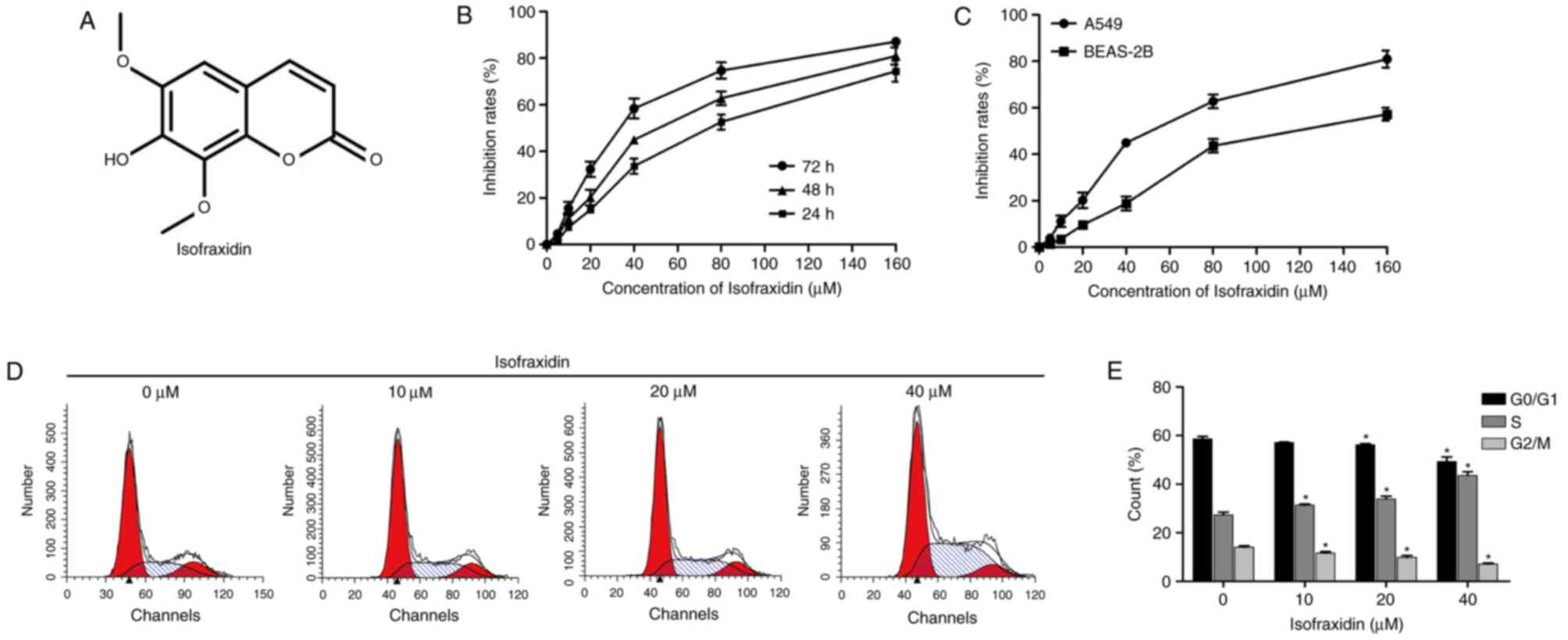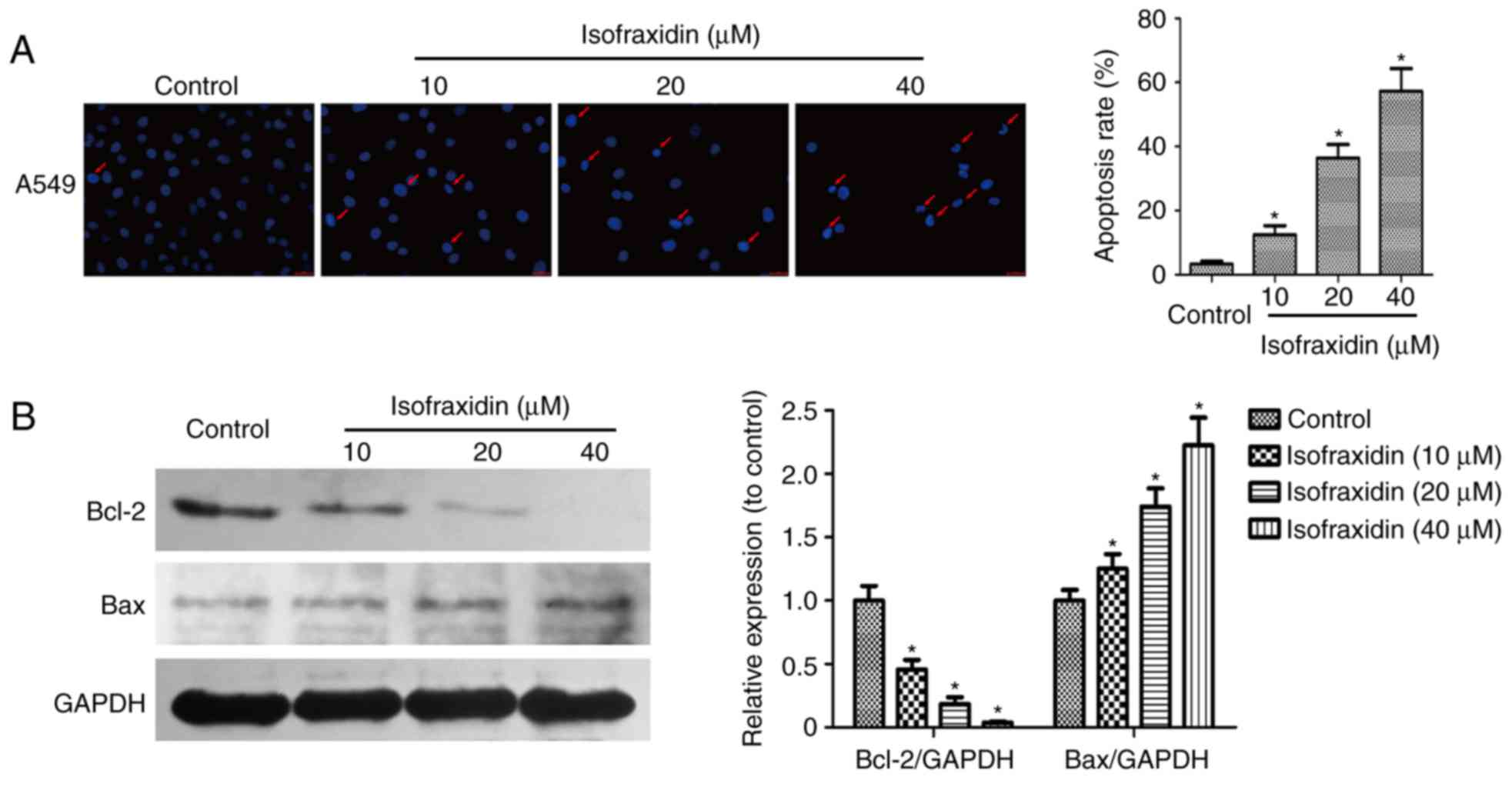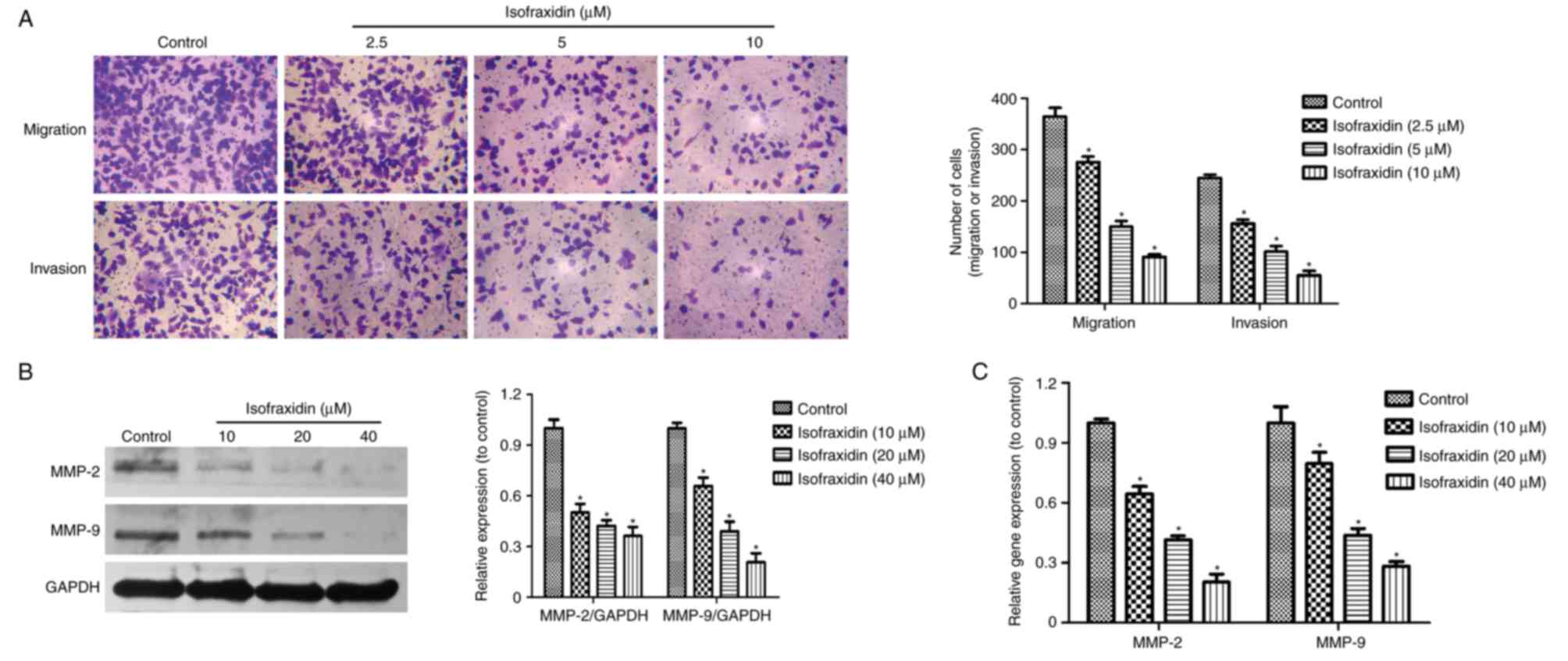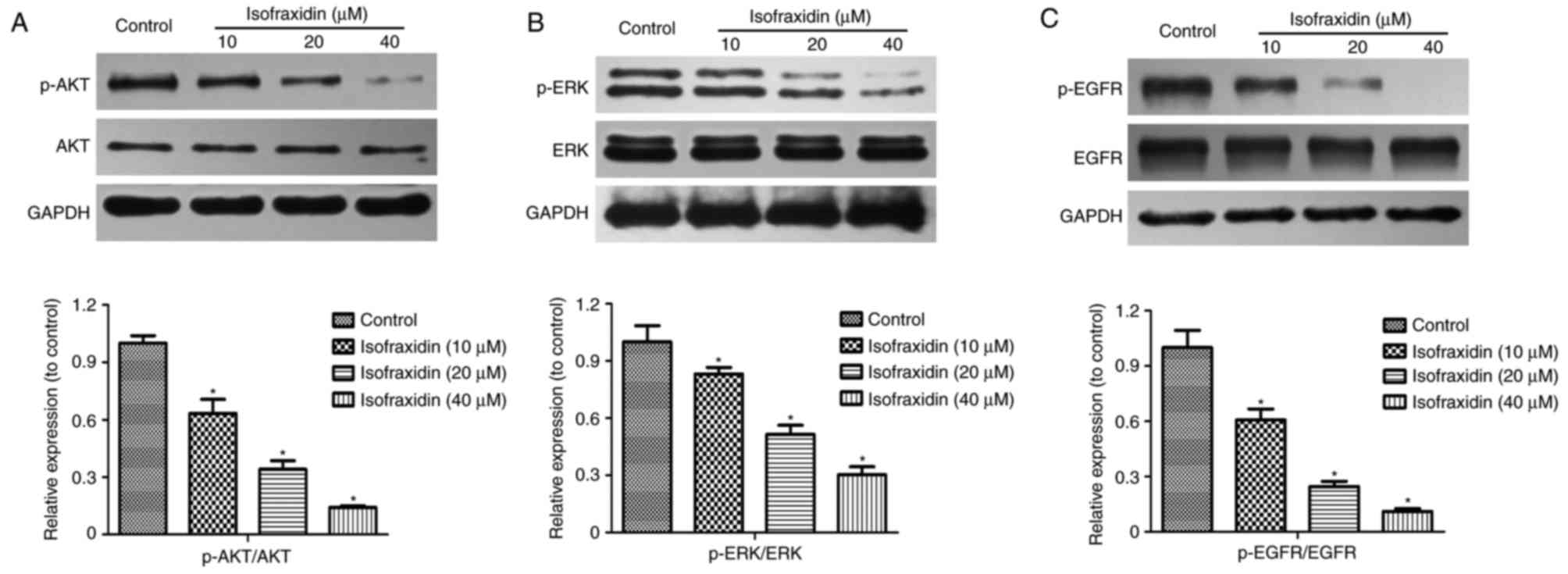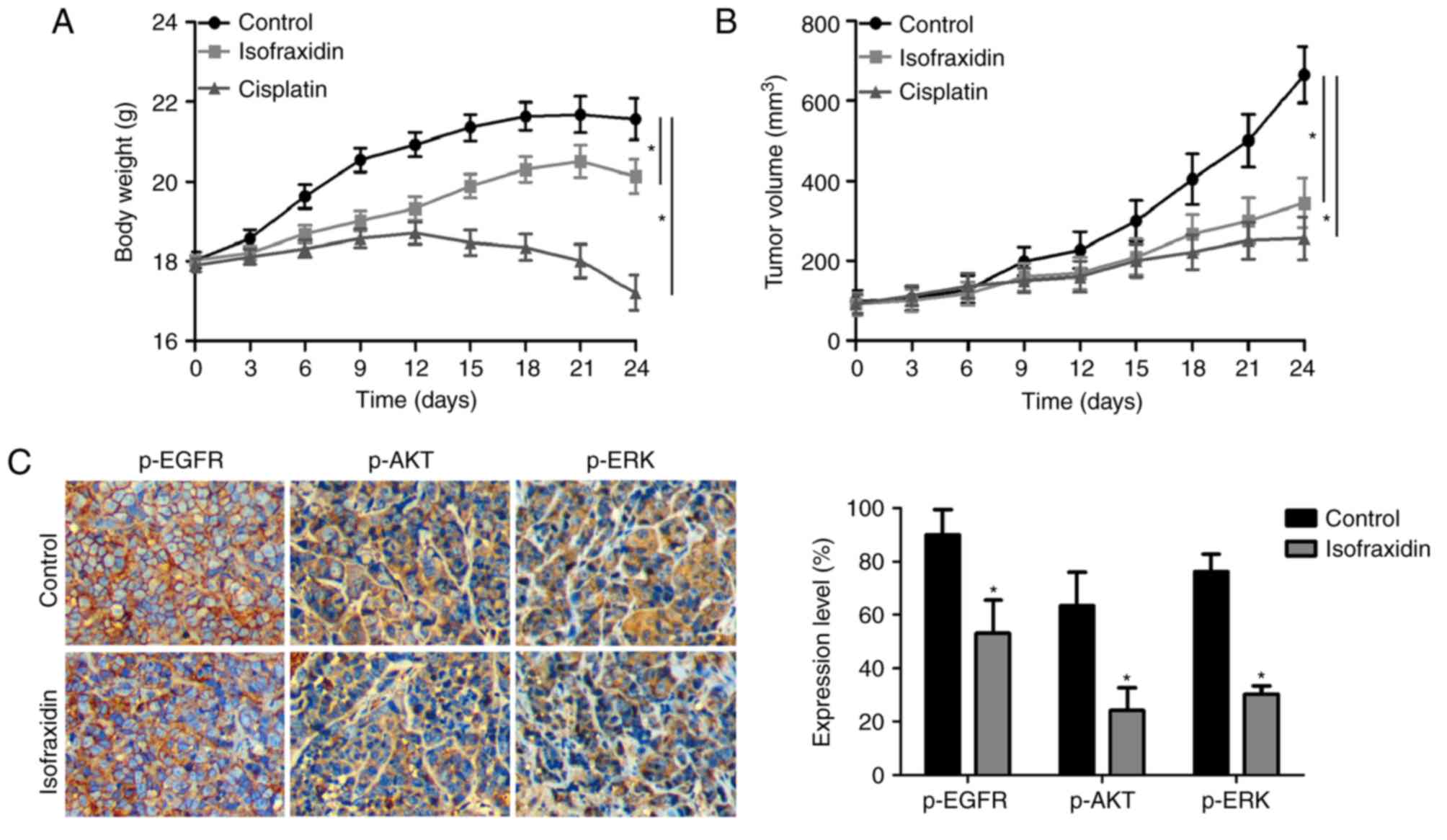|
1
|
Chang A: Chemotherapy, chemoresistance and
the changing treatment landscape for NSCLC. Lung Cancer. 71:3–10.
2011. View Article : Google Scholar : PubMed/NCBI
|
|
2
|
Lamb YN and Scott LJ: Osimertinib: A
review in T790M-positive advanced non-small cell lung cancer.
Target Oncol. 12:555–562. 2017. View Article : Google Scholar : PubMed/NCBI
|
|
3
|
Goss GD and Spaans JN: Epidermal growth
factor receptor inhibition in the management of squamous cell
carcinoma of the lung. Oncologist. 21:205–213. 2016. View Article : Google Scholar : PubMed/NCBI
|
|
4
|
Salmenkivi K and Knuuttila A: Diagnostics
of non-small cell lung carcinoma. Duodecim. 130:701–704. 2014.(In
Finnish). PubMed/NCBI
|
|
5
|
Rosenzweig K: Stereotactic body radiation
therapy as an alternative to surgery in early-stage non-small-cell
lung cancer. Oncology (Williston Park). 31:492–498. 2017.PubMed/NCBI
|
|
6
|
Wan Y, Yuan Y, Pan Y and Zhang Y:
Antitumor activity of high-dose pulsatile gefitinib in
non-small-cell lung cancer with acquired resistance to epidermal
growth factor receptor tyrosine kinase inhibitors. Exp Ther Med.
13:3067–3074. 2017. View Article : Google Scholar : PubMed/NCBI
|
|
7
|
Zhang K and Yuan Q: Current mechanism of
acquired resistance to epidermal growth factor receptor-tyrosine
kinase inhibitors and updated therapy strategies in human nonsmall
cell lung cancer. J Cancer Res Ther. 12 Suppl:C131–C137. 2016.
View Article : Google Scholar : PubMed/NCBI
|
|
8
|
Pan L, Chai H and Kinghorn AD: The
continuing search for antitumor agents from higher plants.
Phytochem Lett. 3:1–8. 2010. View Article : Google Scholar : PubMed/NCBI
|
|
9
|
Shen P, Wang HG, Li MM, Ma QY, Zhou CW,
Pan F and Xie R: Isofraxidin inhibited proliferation and induced
apoptosis via blockage of Akt pathway in human colorectal cancer
cells. Biomed Pharmacother. 92:78–85. 2017. View Article : Google Scholar : PubMed/NCBI
|
|
10
|
Niu X, Xing W, Li W, Fan T, Hu H and Li Y:
Isofraxidin exhibited anti-inflammatory effects in vivo and
inhibited TNF-α production in LPS-induced mouse peritoneal
macrophages in vitro via the MAPK pathway. Int Immunopharmacol.
14:164–171. 2012. View Article : Google Scholar : PubMed/NCBI
|
|
11
|
Khan S, Riaz N, Afza N, Malik A,
Aziz-ur-Rehman, Iqbal L and Lateef M: Antioxidant constituents from
Cotoneaster racemiflora. J Asian Nat Prod Res. 11:44–48. 2009.
View Article : Google Scholar : PubMed/NCBI
|
|
12
|
Deyama T, Nishibe S and Nakazawa Y:
Constituents and pharmacological effects of Eucommia and Siberian
ginseng. Acta Pharmacol Sin. 22:1057–1070. 2001.PubMed/NCBI
|
|
13
|
Yamazaki T and Tokiwa T: Isofraxidin, a
coumarin component from Acanthopanax senticosus, inhibits matrix
metalloproteinase-7 expression and cell invasion of human hepatoma
cells. Biol Pharm Bull. 33:1716–1722. 2010. View Article : Google Scholar : PubMed/NCBI
|
|
14
|
Qian L, Li X, Ye P, Wang G, Dai W, Liu Y,
Gao Q and Shen G: Oxymatrine induces apoptosis and inhibits
invasion in Gallbladder carcinoma via PTEN/PI3K/AKT pathway.
Cytotechnology. 70:83–94. 2018. View Article : Google Scholar : PubMed/NCBI
|
|
15
|
Hu S, Ran Y, Chen W, Zhang Y and Xu Y:
MicroRNA-326 inhibits cell proliferation and invasion, activating
apoptosis in hepatocellular carcinoma by directly targeting LIM and
SH3 protein 1. Oncol Rep. 38:1569–1578. 2017. View Article : Google Scholar : PubMed/NCBI
|
|
16
|
Bai L, Lin G, Sun L, Liu Y, Huang X, Cao
C, Guo Y and Xie C: Upregulation of SIRT6 predicts poor prognosis
and promotes metastasis of non-small cell lung cancer via the
ERK1/2/MMP9 pathway. Oncotarget. 7:40377–40386. 2016. View Article : Google Scholar : PubMed/NCBI
|
|
17
|
Wang Y, Wan D, Zhou R, Zhong W, Lu S and
Chai Y: Geraniin inhibits migration and invasion of human
osteosarcoma cancer cells through regulation of PI3K/Akt and ERK1/2
signaling pathways. Anticancer Drugs. 28:959–966. 2017. View Article : Google Scholar : PubMed/NCBI
|
|
18
|
Li W, Sun D, Lv Z, Wei Y, Zheng L, Zeng T
and Zhao J: Insulin-like growth factor binding protein-4 inhibits
cell growth, migration and invasion, and downregulates COX-2
expression in A549 lung cancer cells. Cell Biol Int. 41:384–391.
2017. View Article : Google Scholar : PubMed/NCBI
|
|
19
|
Zhang L, Ge C, Zhao F, Zhang Y, Wang X,
Yao M and Li J: NRBP2 overexpression increases the chemosensitivity
of hepatocellular carcinoma cells via Akt signaling. Cancer Res.
76:7059–7071. 2016. View Article : Google Scholar : PubMed/NCBI
|
|
20
|
Niu X, Wang Y, Li W, Mu Q, Li H, Yao H and
Zhang H: Protective effects of Isofraxidin against
lipopolysaccharide-induced acute lung injury in mice. Int
Immunopharmacol. 24:432–439. 2015. View Article : Google Scholar : PubMed/NCBI
|
|
21
|
Edlich F: BCL-2 proteins and apoptosis:
Recent insights and unknowns. Biochem Biophys Res Commun. Jul
1–2017.(Epub ahead of print). PubMed/NCBI
|
|
22
|
Zhou L, Cai X, Han X, Xu N and Chang DC:
CDK1 switches mitotic arrest to apoptosis by phosphorylating
Bcl-2/Bax family proteins during treatment with microtubule
interfering agents. Cell Biol Int. 38:737–746. 2014. View Article : Google Scholar : PubMed/NCBI
|
|
23
|
Spencer SL and Sorger PK: Measuring and
modeling apoptosis in single cells. Cell. 144:926–939. 2011.
View Article : Google Scholar : PubMed/NCBI
|
|
24
|
Hu X, Li D, Zhang W, Zhou J, Tang B and Li
L: Matrix metalloproteinase-9 expression correlates with prognosis
and involved in ovarian cancer cell invasion. Arch Gynecol Obstet.
286:1537–1543. 2012. View Article : Google Scholar : PubMed/NCBI
|
|
25
|
Kessenbrock K, Plaks V and Werb Z: Matrix
metalloproteinases: Regulators of the tumor microenvironment. Cell.
141:52–67. 2010. View Article : Google Scholar : PubMed/NCBI
|
|
26
|
Wang L, Wu H, Wang L, Zhang H, Lu J, Liang
Z and Liu T: Asporin promotes pancreatic cancer cell invasion and
migration by regulating the epithelial-to-mesenchymal transition
(EMT) through both autocrine and paracrine mechanisms. Cancer Lett.
398:24–36. 2017. View Article : Google Scholar : PubMed/NCBI
|
|
27
|
Yang L, Liu Y, Wang M, Qian Y, Dong X, Gu
H, Wang H, Guo S and Hisamitsu T: Quercetin-induced apoptosis of
HT-29 colon cancer cells via inhibition of the Akt-CSN6-Myc
signaling axis. Mol Med Rep. 14:4559–4566. 2016. View Article : Google Scholar : PubMed/NCBI
|
|
28
|
Wang H, Chen B, Duan B, Zheng J and Wu X:
miR-205 suppresses cell proliferation, invasion, and metastasis via
regulation of the PTEN/AKT pathway in renal cell carcinoma. Mol Med
Rep. 14:3343–3349. 2016. View Article : Google Scholar : PubMed/NCBI
|
|
29
|
Chan LP, Liu C, Chiang FY, Wang LF, Lee
KW, Chen WT, Kuo PL and Liang CH: IL-8 promotes inflammatory
mediators and stimulates activation of p38 MAPK/ERK-NF-κB pathway
and reduction of JNK in HNSCC. Oncotarget. 8:56375–56388. 2017.
View Article : Google Scholar : PubMed/NCBI
|
|
30
|
Cepeda MA, Evered CL, Pelling JJH and
Damjanovski S: Inhibition of MT1-MMP proteolytic function and
ERK1/2 signalling influences cell migration and invasion through
changes in MMP-2 and MMP-9 levels. J Cell Commun Signal.
11:167–179. 2017. View Article : Google Scholar : PubMed/NCBI
|
|
31
|
Gur S, Sikka SC, Abdel-Mageed AB, Elmageed
Abd ZY, Rezk B, Pankey E, Kadowitz PJ and Hellstrom WJ: Imatinib
mesylate (gleevec) induces human corpus cavernosum relaxation by
inhibiting Receptor Tyrosine Kinases (RTKs): Identification of new
RTK targets. Urology. 82(745): e11–6. 2013.PubMed/NCBI
|
|
32
|
Puri N and Salgia R: Synergism of EGFR and
c-Met pathways, cross-talk and inhibition, in non-small cell lung
cancer. J Carcinog. 7:92008. View Article : Google Scholar : PubMed/NCBI
|
|
33
|
Liu TC, Jin X, Wang Y and Wang K: Role of
epidermal growth factor receptor in lung cancer and targeted
therapies. Am J Cancer Res. 7:187–202. 2017.PubMed/NCBI
|



